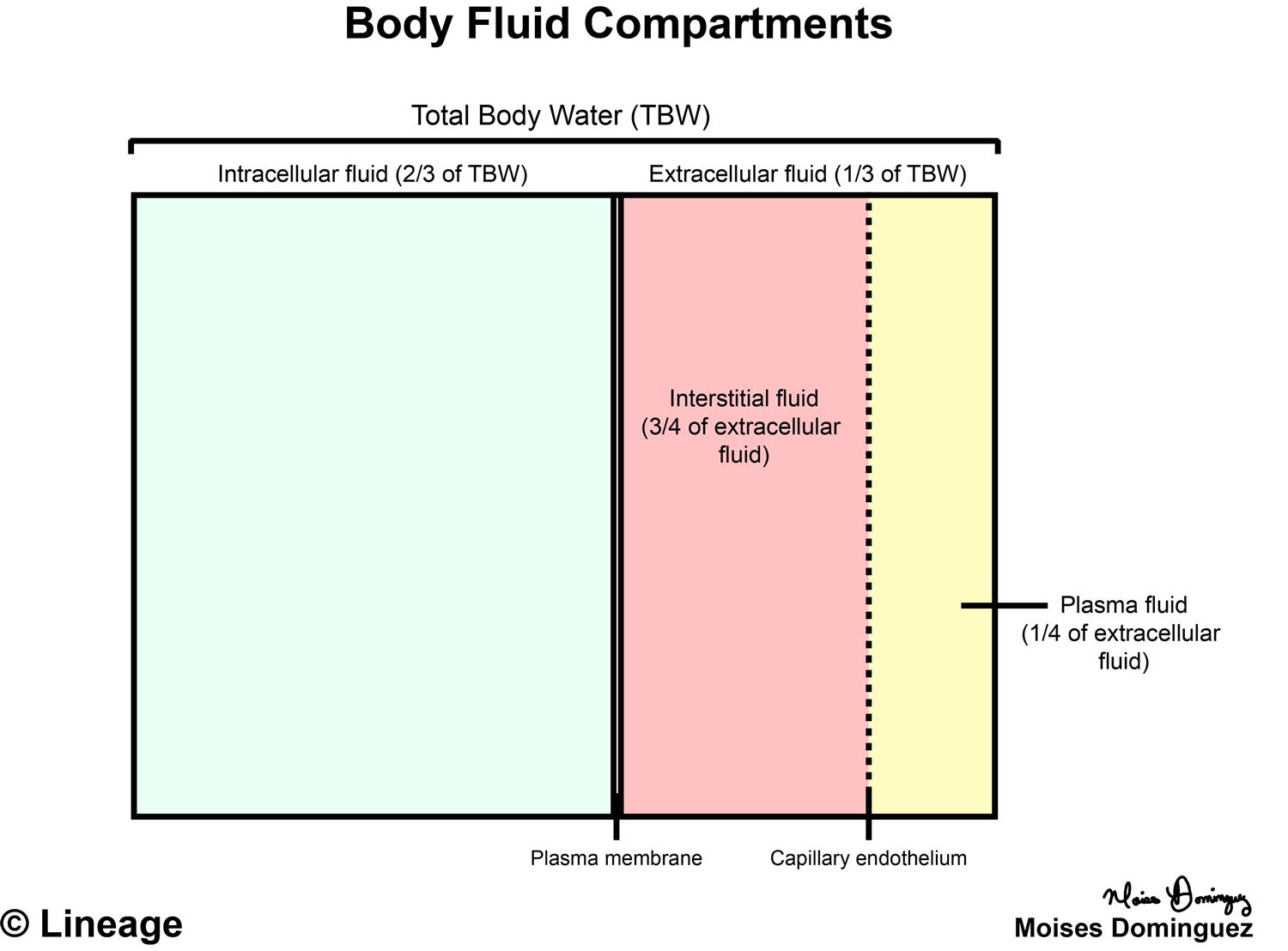
Also, the lumen of the gastrointestinal tract is often classified as belonging to the third space, although it has substantial fluid content physiologically. Still, small amount of fluid does exist normally in such spaces, and function for example as lubricant in the case of pleural fluid. Major examples of third spaces include the peritoneal cavity and pleural cavity. The third space is space in the body where fluid does not normally collect in larger amounts, or where any significant fluid collection is physiologically nonfunctional. The volume of the intravascular lumen is regulated in part by hydrostatic pressure gradients, and by reabsorption by the kidneys. The average volume of plasma in the average (70 kg) male is approximately 3.5 liters. The main intravascular fluid in mammals is blood, a complex fluid with elements of a suspension (blood cells), colloid (globulins) and solutes (glucose and ions). For gas exchange to occur, carbon dioxide must diffuse across the endothelium of the capillaries across the interstitial space, and across the alveolar epithelium oxygen must diffuse the other direction, into the blood in the capillaries. In the lungs there is an interstitial space between capillaries (tiny blood vessels) and the alveoli (the microscopic air-filled sacs in the lungs responsible for absorbing oxygen from the atmosphere). In the average male (70 kg) human body, the interstitial space has approximately 10.5 litres of fluid. This fluid is not static, but is continually being refreshed and recollected by lymphatic channels. Interstitial fluid provides the immediate microenvironment that allows for movement of ions, proteins and nutrients across the cell barrier. When excessive fluid accumulates in the interstitial space, edema develops. Together with the vascular space, the interstitial space comprises the extracellular space. Interstitial refers to a "small opening or space between objects". The interstitial compartment (also called extravascular compartment or tissue space) is the space that surrounds the cells of a given tissue. In humans, the intracellular compartment contains on average about 28 litres of fluid, and under ordinary circumstances remains in osmotic equilibrium with the ECF.Įxtracellular Fluid Interstitial Compartment Intracellular fluid is found inside the two-layered plasma membrane of the body's cells, and is the matrix in which cellular organelles are suspended, and chemical reactions take place. Intracellular fluid (ICF), which makes up approximately 60-65% of body water, andĮxtracellular fluid (ECF), which makes up the other 35-40% of body water (for all practical purposes, the only solvent in the body is water). Overviewįluid compartments in the mammalian body broadly comprise two compartments, each with several subdivisions: List of terms related to Fluid compartmentsĮditor-In-Chief: C.

Risk calculators and risk factors for Fluid compartmentsĬauses & Risk Factors for Fluid compartmentsĭiagnostic studies for Fluid compartments US National Guidelines Clearinghouse on Fluid compartmentsĭirections to Hospitals Treating Fluid compartments Ongoing Trials on Fluid compartments at Clinical Ĭlinical Trials on Fluid compartments at Google Most cited articles on Fluid compartmentsĪrticles on Fluid compartments in N Eng J Med, Lancet, BMJĬochrane Collaboration on Fluid compartments Most recent articles on Fluid compartments


 0 kommentar(er)
0 kommentar(er)
